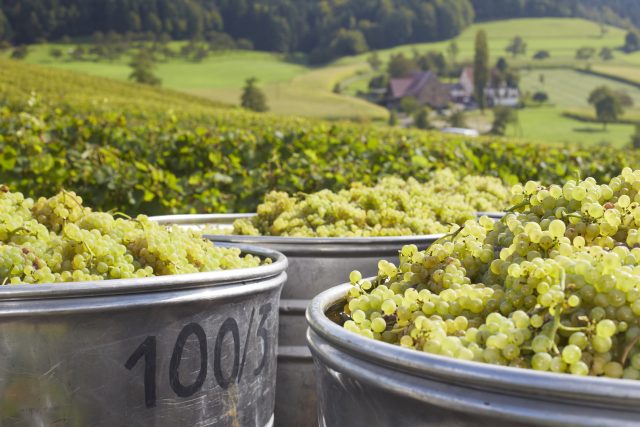Germany’s 2025 wine harvest is forecast to improve on last year’s weak crop, with strong gains for Pinot Noir and Pinot Blanc, but smaller yields for Müller-Thurgau and Dornfelder, according to the Federal Statistical Office.

Improved conditions after a challenging 2024
Germany’s wine producers are expecting a stronger harvest in 2025, with total wine must output projected at 8.2 million hectolitres, up 5% on the previous year’s 7.8 million hectolitres, according to figures released by the Federal Statistical Office (Destatis).
The increase follows a poor 2024 harvest, when late frosts and heavy rainfall saw volumes fall 12% below the six-year average. While this year’s weather has been more favourable, the 2025 total still sits 3% below the recent six-year average of 8.5 million hectolitres (2019-2024).
More than half of this year’s expected total will come from Germany’s largest winegrowing regions – Rheinhessen (2.2m hl) and Pfalz (2.0m hl) – with Baden (1.2m hl) and Württemberg (911,000 hl) accounting for a further quarter.
Regional winners and losers
Many growing regions are set for higher yields compared with 2024. The biggest increases are forecast in Baden (+24%), Württemberg (+34%), Mosel (+44%), Franconia (+30%), Nahe (+30%), and Saale-Unstrut (+275%), following steep declines last year.
However, harvests are expected to fall in several major regions, including Rheinhessen (-14%), Pfalz (-11%), and Rheingau (-7%). Rheinhessen was the only major region to record an increase in 2024, while Pfalz and Rheingau saw the smallest declines that year.
Pinot noir and pinot blanc lead the growth
Of the total 2025 harvest, 69% (5.7m hl) is projected to be white must and 31% (2.6m hl) red. White varieties will dominate in the Mosel (90%), Rheingau (86%) and Franconia (85%) regions.
Germany’s flagship white grape Riesling is set to rise 3% to 1.9m hl, while Pinot Blanc and Pinot Gris are expected to increase by 16% (to 529,000 hl) and 10% (to 638,000 hl) respectively.
Among red varieties, Pinot Noir (Blauer Spätburgunder) is forecast to surge 21% to 851,000 hl, whereas Dornfelder is predicted to decline 18% to 574,000 hl.
In contrast, Müller-Thurgau – once a dominant white variety – is expected to drop 12% to 932,000 hl.
A moderately positive outlook
Despite signs of recovery, the 2025 estimate remains below average, reflecting ongoing climatic challenges. Destatis noted that the projections, based on data from around 400 volunteer harvest reporters as of 20 September, are subject to change depending on weather, disease pressure, and local conditions.
Climate change, it said, continues to increase the risks of extreme events such as frost, hail, storms, and heavy rain, which can lead to significant regional variation in yields.
Related news
The story of Hasher Family Wines’ viticultural odyssey
Platt Vineyard: ‘Not what you think of from California’
Conte Vistarino celebrates successful harvest in historic year


Dining and Cooking